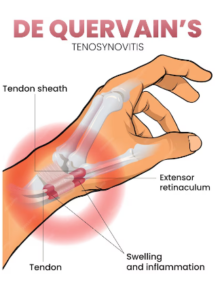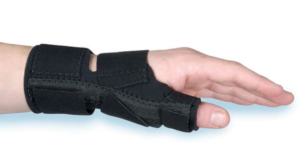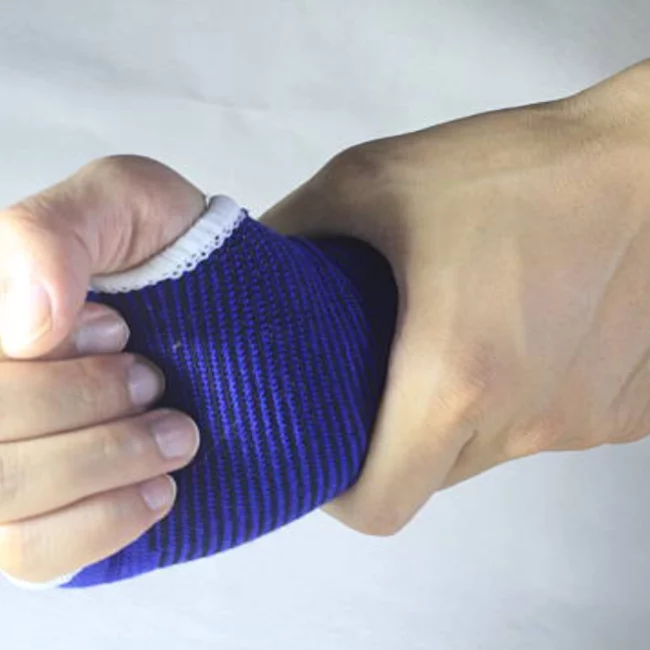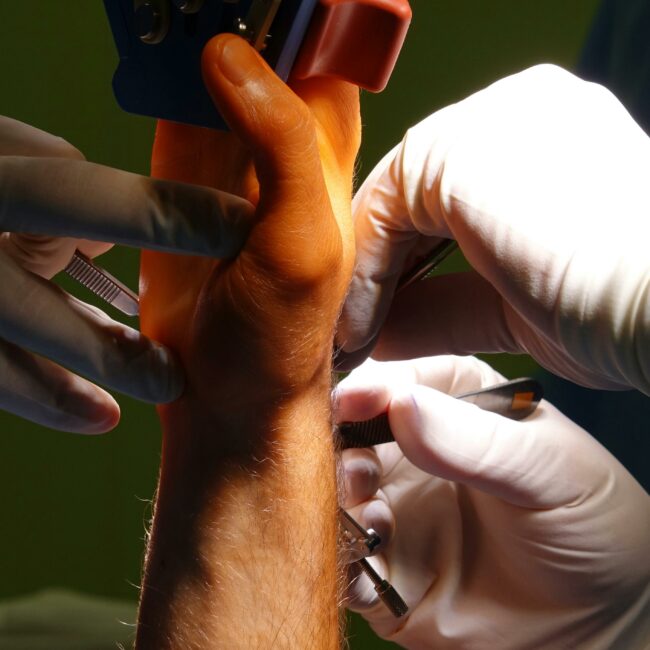
De Quervain’s Tendinitis: What You Need to Know
De Quervain tenosynovitis (dih-kwer-VAIN ten-oh-sine-oh-VIE-tis) is a painful condition affecting the tendons on the thumb side of the wrist. De Quervain’s tenosynovitis is more than just wrist discomfort. It makes even the simplest tasks, like turning a doorknob, gripping your phone, or making a fist, intensely painful. This condition severely limits the ability to perform everyday activities resulting in frustration and affecting quality of life.
If left untreated, it can lead to chronic pain and loss of hand function. Early diagnosis and treatment are crucial to prevent long-term damage. In this blog, we explore the causes, symptoms, and treatment options for De Quervain’s tendinitis, guided by the expertise of Dr. Marouane Bouloudhnine, a leading orthopedic specialist in Dubai.
What is De Quervain’s Tendinitis?
De Quervain’s tenosynovitis is a condition that causes irritation and pain due to inflammation of two of the three tendons responsible for thumb extension. The affected tendons are the abductor pollicis longus (which extends the first metacarpal) and the extensor pollicis brevis (which extends the metacarpophalangeal joint of the thumb). These tendons are housed and pressed against the radius (the main bone of the wrist) in a tunnel known as the “first extensor compartment.” When the tendons become enlarged, or the tunnel walls narrow, abnormal friction can occur, leading to painful tendinitis.
Causes and Symptoms of De Quervain’s Tendinitis
Causes:
- Repetitive Motions: Repeated thumb or wrist movements, such as gardening, lifting, or typing, cause the tendons to thicken and become inflamed, leading to friction in the tendon tunnel.
- Improper Healing of Fractures: If a wrist fracture heals poorly or there is bone overgrowth, it narrows the space in the tunnel, increasing tendon irritation.
- Anatomical Variations: Extra fibrous partitions within the tendon tunnel increase friction and irritation between the tendons.
- Inflammatory Conditions: Conditions like Rheumatoid Arthritis, Diabetes, or hormonal changes (such as those during Pregnancy or Postpartum) lead to inflammation of the tendons and surrounding tissues.
Symptoms:
Women are more frequently affected than men, and De Quervain’s tendinitis can occur at any age post-childhood. The main symptom is intense pain when the abductor pollicis longus and extensor pollicis brevis tendons are strained. This pain is localized at the wrist and may radiate into the thumb, leading to:
- Loss of strength, causing difficulty in gripping objects or dropping them.
- In more severe cases, there may be significant functional impairment, requiring time off work or limiting daily activities.
- A mass (cyst) may form near the primary area of pain.
- Tingling or electric shock sensations may occur on the back of the hand, especially around the first web space (between the thumb and index finger).
These symptoms are often exacerbated by movements involving the thumb or wrist, making everyday tasks more challenging. The condition can significantly impact quality of life if left untreated.
Diagnosis of De Quervain’s Tendinitis
Clinical Examination:
One of the most definitive tests for diagnosing De Quervain’s tendinitis is Finkelstein’s test, which is highly indicative of the condition.
During this test:
- The patient places their thumb inside their palm, wrapping the other fingers over it.
- The wrist is gently tilted towards the ulna by the examiner.
- A sharp, localized pain over the radius confirms the presence of De Quervain’s tendinitis.
Additional Clinical Findings may include:
- Irritation of the radial nerve’s sensory branch: This nerve crosses over the inflamed tendon tunnel and can become irritated, causing nerve-related symptoms. By tapping the area, a pseudo-Tinel sign may be elicited, producing an electric shock-like sensation radiating to the first web space on the back of the hand.
- Cyst formation: A cyst, often located near the tendon tunnel, can develop due to excess synovial fluid production. This is a common peripheral sign and may sometimes be the primary reason for consultation.

Differential Diagnoses to consider:
- Thumb basal joint arthritis (rhizarthrosis).
- Wartenberg syndrome: Compression of the radial nerve’s sensory branch under the brachioradialis muscle.
Conditions associated with De Quervain’s tendinitis:
- Trigger finger.
- Carpal tunnel syndrome.
Imaging Tests: Typically, imaging is not required for diagnosis, but if there are diagnostic uncertainties or overlapping conditions, the following tests may be performed:
- X-rays: To rule out bone abnormalities, such as a healed wrist fracture.
- Ultrasound: Useful for detecting fluid buildup in the first extensor compartment and guiding injections.
- MRI: This may be used in complex cases to evaluate the condition further and differentiate it from other pathologies.
Additional Tests: If hormonal or rheumatologic conditions are suspected, blood tests may be performed based on clinical findings or patient history.
Treatment of De Quervain’s Tendinitis
Medical Treatment:
- Pain Management: Wearing a night or daytime brace, along with NSAIDs (if there are no contraindications), can help manage pain.
- Injections: Ultrasound-guided corticosteroid injections are highly effective. Ultrasound ensures precise delivery to the affected area and prevents injury to the nearby radial nerve sensory branch.
- Physical Therapy: Anti-inflammatory physical therapy treatments, such as ultrasound therapy, can be beneficial. However, activities involving repetitive wrist movements or resistance exercises should be avoided, as they can exacerbate the condition.

Surgical Treatment: For cases unresponsive to medical treatment, surgery may be necessary. A hand surgeon will perform a tenosynovectomy, which involves:
- Making a small, minimally invasive incision to release the inflamed extensor tendons from the first extensor compartment.
- Carefully handling the radial nerve’s sensory branches to stop neurological irritation and protect them from injury.
- Removing any extra partitions within the tendon tunnel to ensure all tendinous fibers are fully released.
- Sending tissue samples for analysis, if required.
This surgical approach significantly reduces pain and restores wrist function, particularly when conservative treatments fail.
4 Essential Tips to Prevent De Quervain’s Tendinitis
- Take Breaks: Rest your thumb and wrist regularly to avoid strain.
- Avoid Aggravation: Minimize repetitive motions that worsen pain.
- Strengthen Muscles: Incorporate thumb and wrist exercises for better support.
- Use Proper Ergonomics: Maintain good posture during repetitive tasks to prevent tendon strain.
By following these tips, you can reduce your risk of developing or worsening De Quervain’s Tendinitis.
Importance of Early Treatment:
Early treatment of De Quervain’s tendinitis is crucial. If untreated, it can cause chronic pain, tendon damage, and difficulty with simple tasks like holding objects. Studies show repetitive wrist use increases the risk of this condition, especially if ignored. Timely intervention prevents complications and improves recovery.
Struggling with wrist pain from De Quervain’s tendinitis?
Don’t wait for it to get worse.
Book a consultation with Dr. Marouane Bouloudhnine, a hand-to-shoulder specialist, in Dubai, and discover how personalized treatments bring fast relief and restore your wrist’s mobility.
Your hands deserve expert care!







